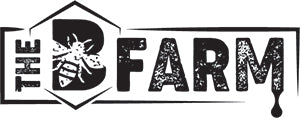Queen Bee Breeding
Queen Bee Breeding

"THERE IS NO SCIENTIFIC EVIDENCE THAT NORTHERN BRED HONEYBEE QUEENS HAVE BETTER SURVIVABILITY CHARACTERISTICS THAN SOUTHERN BRED QUEENS"
Today there are probably as many attempts as ever to raise honeybee queens in Northern climates across the North American Continent. Such attempts at queen bee breeding can be traced back to the invention of the moveable frame hive over 150 years ago. Raising queen bees in northern climates is not practical because the timing of pollen flows required for the necessary production of brood and young bees to stock the baby nucs needed for timely queen rearing do not occur early enough to sustain production before pollen flows decline. This factor—along with others described below—define the differences between northern vs. southern honeybee queens.
Queens grafted raised and bred in southern climates have far better odds of survival in northern climates when other prerequisites are met including, but not limited to, pesticide/fungicide exposure during foraging season, general age of the cluster of bees going into the winter, age of the queen, sufficient stores of honey and pollen, low mite and viral loads, proper insulation and ventilation of the colony, direction of the entrance, general air drainage at the apiary site, and average daily temperature/humidity during winter months all play a critical role in colony survival.
We start grafting for queen bee breeding and production in Louisiana during the first 10 days of March, depending on weather conditions. There are thousands upon thousands of acres of swamp maple and willow trees in the low country combined with buttercup, white clover in pastures and privet in the hedgerows to provide a high-quality protein pollen flow unmatched in North America. The timing and variety of these pollen flows drive the brood production necessary to stock our nucs and baby nucs for the queen bee breeding program. These environmental conditions combined with careful selection for production with mite resistance result in queens with an excellent chance for winter survival when the conditions described in the paragraph above are met.
We have several experimental overwintering bee yards in Western New York and one in Maine on an out island in Casco Bay providing a pesticide free environment.
These colonies are maintained with our queens. Winter survival rates are encouraging.
